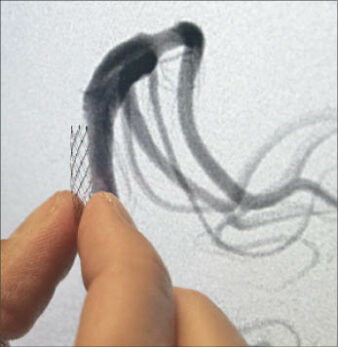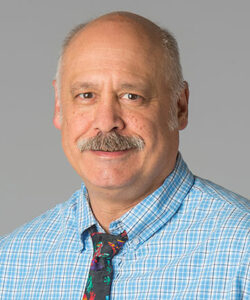Therapy prevails in stroke study
Doctors at Sacred Heart contribute to nationwide trial for device, treatment

Initial findings of a nationwide trial in which Providence Sacred Heart Medical Center & Children's Hospital participated show that certain stroke patients who received aggressive medical therapy had fewer subsequent strokes than patients who received a brain stent in addition to the treatment.
The trial, which is intended to compare outcomes for patients receiving aggressive medical therapy with and without the brain stent, had been scheduled to enroll participants for a period of five years.
The National Institutes of Health, which sponsored the study, halted enrollment in the trial about halfway through that period, because early data showed more strokes and deaths occurred among the stented patients at the 30-day mark compared with the group that received medical management alone. The study is ongoing with the initial enrollees.
Sacred Heart is one of 50 medical centers chosen to participate in the study. The trial team here is led by Dr. Chris Zylak, a neurointerventional radiologist and a principal with Spokane-based Inland Imaging LLC, and Dr. Madeleine Geraghty, of Providence Medical Group and director of the Comprehensive Stroke Center at Sacred Heart.
"This will change my practice fundamentally," Geraghty says of the initial findings. "I know more about how to treat with aggressive therapy before I send a patient to stenting."
Nationwide, 14.7 percent of patients treated with the stent experienced a subsequent stroke, within the first 30 days after enrollment in the trial, including five patients who died. In comparison, 5.8 percent of patients treated with aggressive medical therapy alone had another stroke within 30 days. One patient in the medical-management-only group died of nonstroke-related causes, the National Institutes of Health says.
Zylak says he was surprised by the findings, because no stented patients participating in the trial here have experienced a subsequent stroke.
Zylak's role is to diagnose patients who have intracranial atherosclerosis, a condition that involves narrowing, or stenosis, of certain arteries in the brain, making the patients at high risk for recurrent strokes. Zylak also deployed stents in enrolled participants chosen at random to receive them.
Geraghty's role is to provide aggressive medical therapy to all candidates in the trial here.
Aggressive medical therapy includes daily blood-thinning medications and aggressive control of blood pressure and cholesterol and an exercise regimen.
Participants in the study were between 30 and 80 years old and had experienced a temporary interruption of blood flow in the brain, which is called a transient ischemic attack, or another type of nondisabling stroke within 30 days prior to enrolling. They also had a blockage of 70 percent to 90 percent in one of the main arteries in the brain attributed to atherosclerosis and stenosis.
The medical therapy included acting immediately to change or adjust medications if a patient's cholesterol or blood pressure levels climbed higher than goals set by the study, Geraghty says.
"It includes watching their diets, helping them make sensible eating choices, and having them come back every two weeks," she says. She also counseled patients to participate in exercise programs.
Such intensive medical treatment is the exception rather than the rule for treating intracranial atherosclerosis because of time constraints on care providers and insurance limitations, Geraghty says.
"We didn't have to worry about insurance," she says, because the treatment was funded by the National Institutes of Health.
Conventional medical treatment includes prescribing patients a daily dose of aspirin, and checking their blood pressure and cholesterol levels every three months, she says.
The federal Centers for Disease Control and Prevention estimates that 795,000 people experience strokes in the U.S. annually.
Geraghty says 7 percent to 10 percent of strokes are stenosis related, although that number is much higher among minority populations. For populations of southeast Asian descent, about 30 percent of strokes are caused by stenosis.
Recruitment for the study began in November 2008 and was halted in last April, after 451 patients had been enrolled nationwide.
Because the study is ongoing, she declines to disclose how many of the six study participants here had stents, but says the overall goal of the study was to have half of the participants undergo the stent procedure while all received aggressive medical therapy.
The initial findings were first published in September in the New England Journal of Medicine.
So far, the one-year stroke-recurrence and death rate for aggressive medical therapy alone is about half that estimated using conventional medical treatment, Geraghty says.
The study helped determine that aggressive medical therapy alone should be the primary treatment, Zylak says.
Prior to the study, Zylakperformed the stent procedure only if the patient failed to respond to medical treatment.
Zylak conducts the angioplasty-stenting procedure using what's called a Gateway-Wingspan system in a radiology room where he can monitor its progress via fluoroscopic imaging equipment.
First, he inserts a wire into the femoral artery at the patient's groin and navigates it to the narrowed artery in the brain. Then he slides a catheter over the wire and widens the constricted vessel using a tiny balloon to make room for the stent, which expands to 2.5 to 4 millimeters in diameter when Zylak deploys it.
Angioplasty-stenting procedures in vessels in the heart are widely performed, while the Gateway-Wingspan stent is the only device approved by the U.S. Food and Drug Administration for brain stents in certain high-risk patients, Zylak says.
Zylak says there are significant differences between implanting a stent in a vessel in the heart and in the brain. In the heart, a stent is placed to re-establish blood flow to the heart muscle, he says. In the brain, it's deployed to prevent plaque in the narrowed vessel from breaking free, causing a blockage, which triggers a stroke.
Follow-up of the enrolled patients and further analysis of the trial data will be important in the final interpretation of the study, the NIH says.
Geraghty says she expects to continue following patients for three to five years before the study concludes.
"We don't know if the split between the groups will continue or even out," she says. "Patients in both groups want to continue the trial."
Aggressive medical therapy doesn't reverse stenosis, she says. "We don't go back and look at the artery," she says. "We follow them clinically with a lot of outpatient visits."
Zylak says the study findings likely will present an obstacle for developing similar devices for primary treatment or stroke prevention.
Geraghty says, though, that the current findings don't address whether stenting would be appropriate for patients who experience a stroke sometime after starting aggressive medical therapy.
Related Articles


_c.webp?t=1763626051)

_web.webp?t=1764835652)
